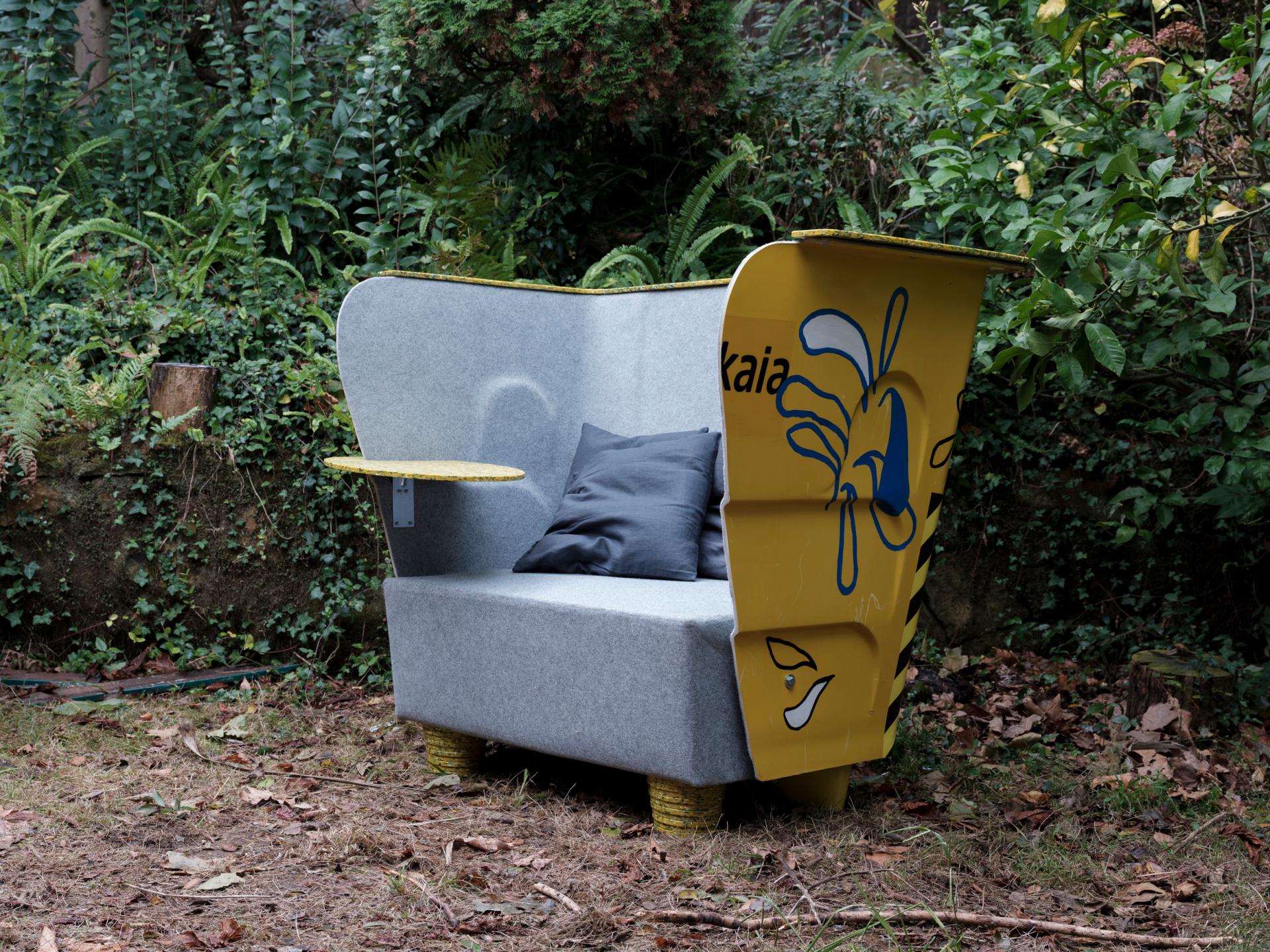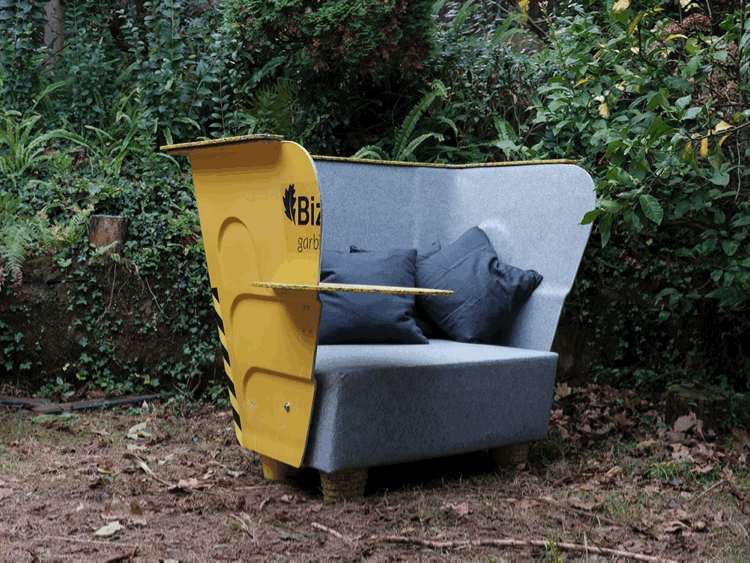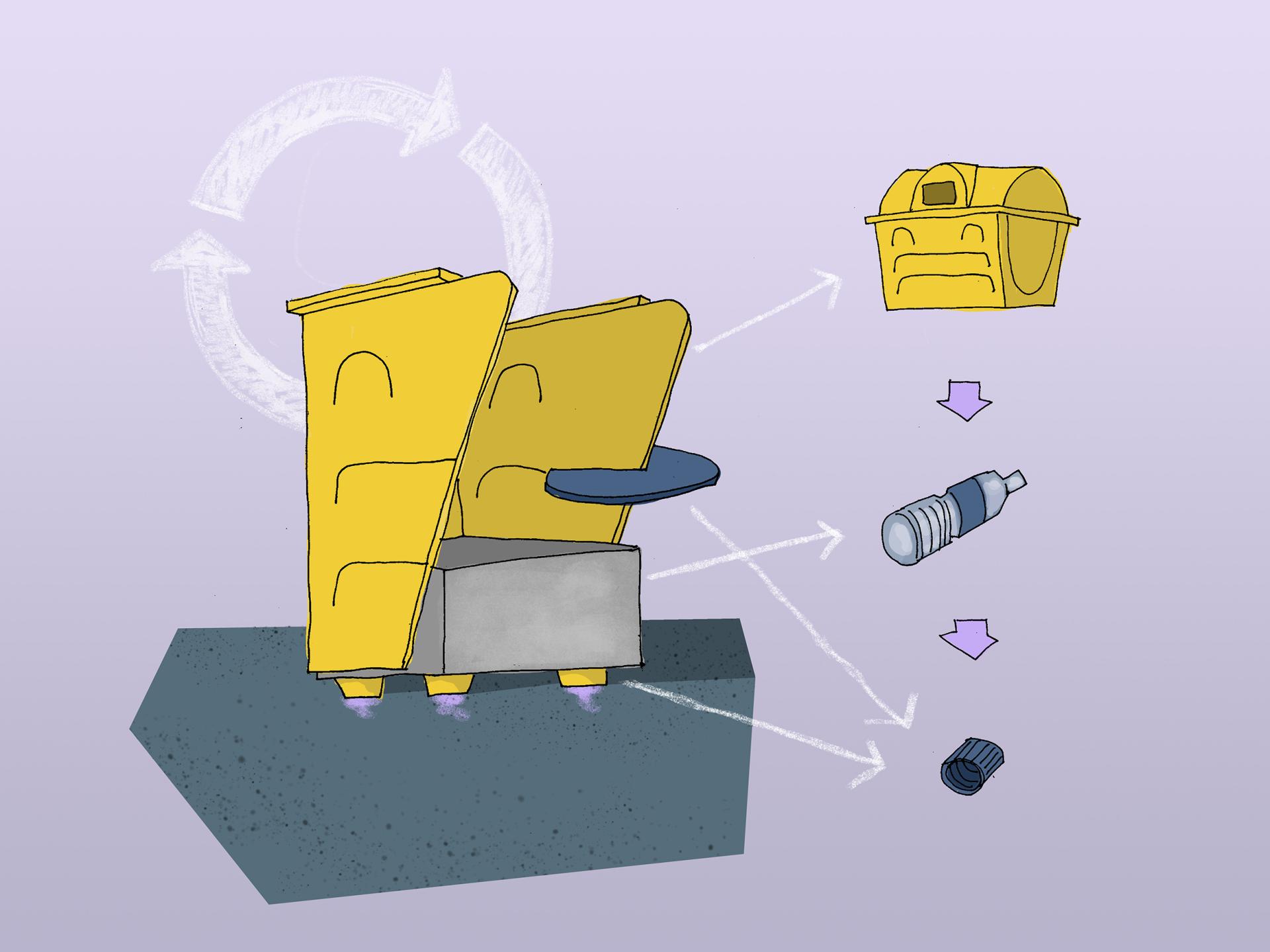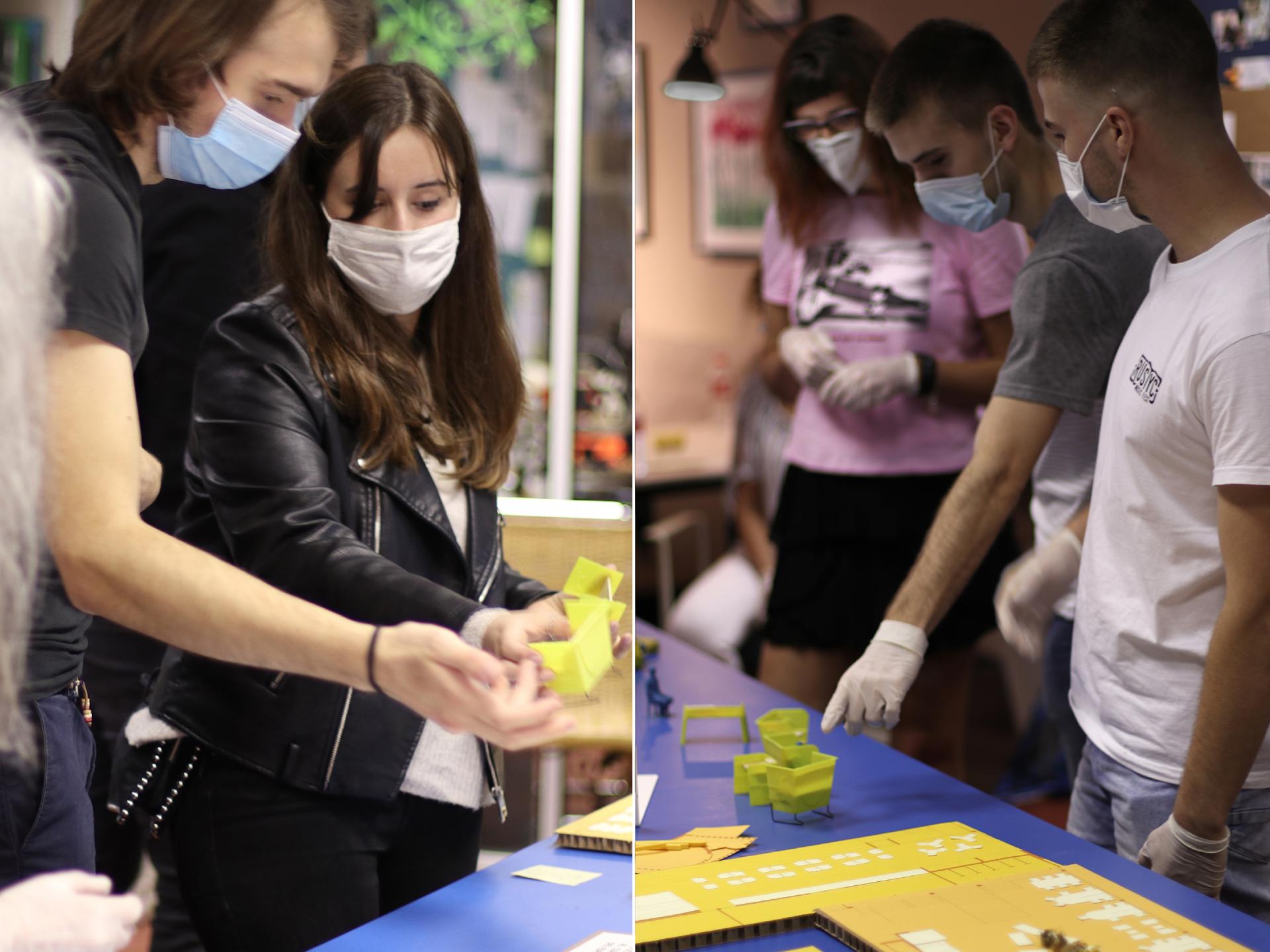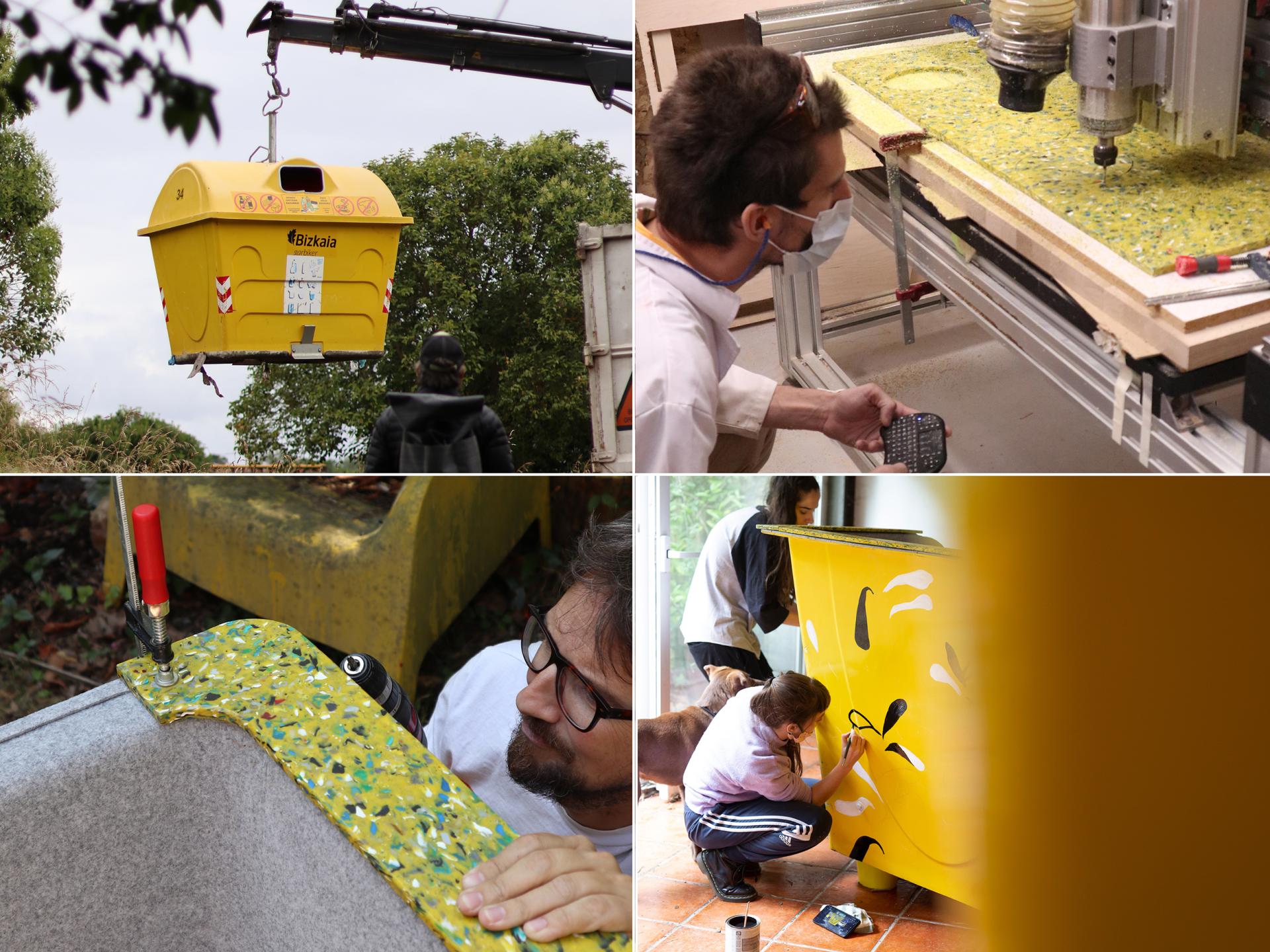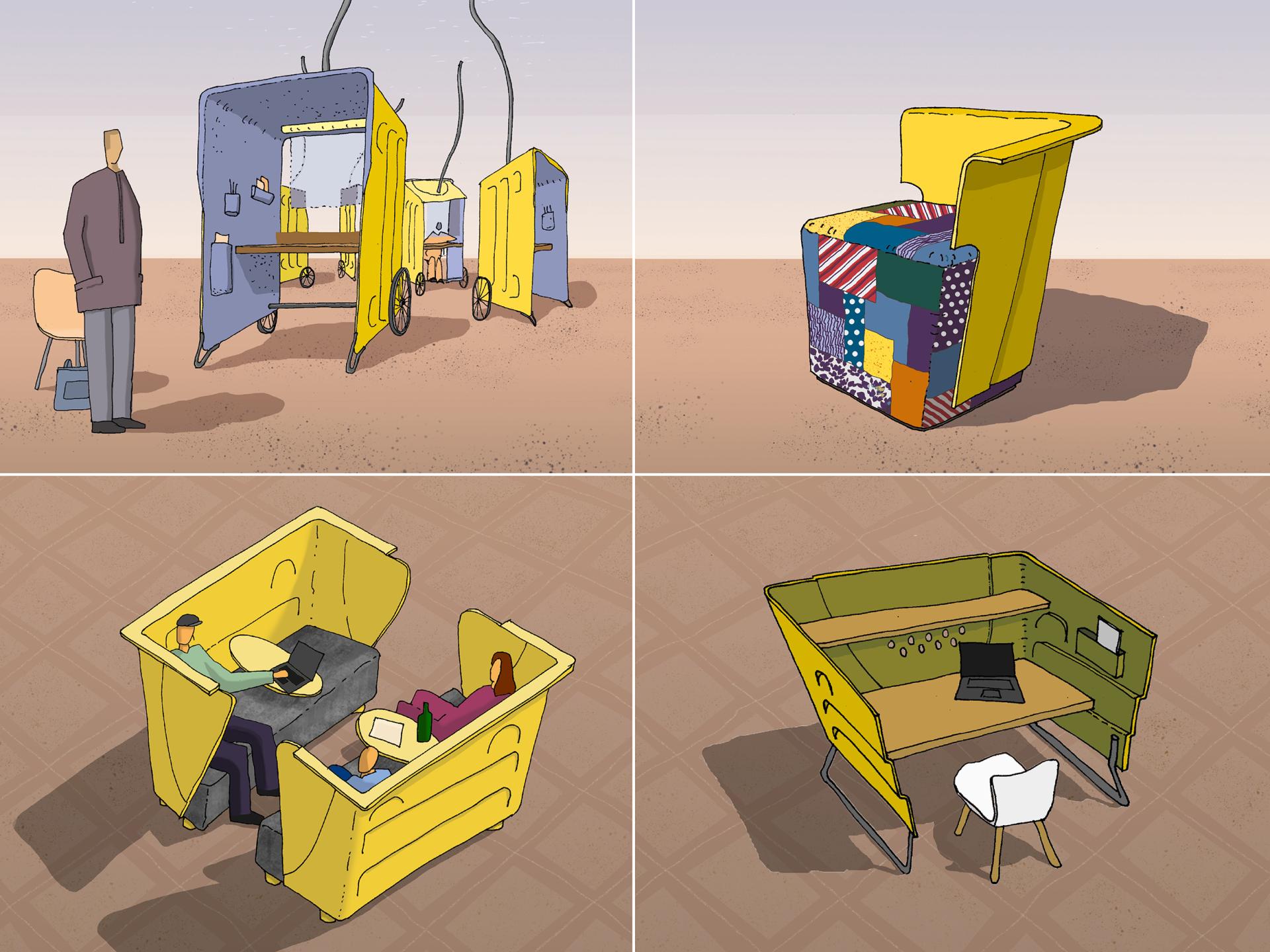Ontzia
Basic information
Project Title
Full project title
Category
Project Description
Ontzia was born to address the current substitution of packaging recycling containers in our region. ‘Recycling the container and its contents': fabric felt is made from recycled plastic bottles and other elements (table, feet, tops) from recycled polyethylene, the caps.
As part of our Biribil initiative, implemented last year with the support of the European Designscapes programme, this is a 'Design Driven Circular Economy' that unequivocally involves users in the process through co-creation.
Project Region
EU Programme or fund
Which funds
Other Funds
Designscapes programme, Stage 2, 2020
Biribil proyect.
Description of the project
Summary
Ontzia was born to address the current substitution of packaging recycling containers in our region.
The furniture collection is part of our Biribil initiative, a 'Design Driven Circular Economy', whose pilot project was implemented in Getxo (Basque Country) during 2020 thanks to the support of the European Designscapes programme. It consisted of refurbishing a study and leisure space of a building in Fadura public sport complex, where users were involved throughout the whole process, by means of co-creation workshops.
Among the solutions, Ontzia highlights for its innovative aesthetic that provides a strong narrative character around the circular economy practices. The upcycling of the container turned out to be a very efficient strategy that helped us to achieve another objective: raising environmental awareness of citizens and local administrations.
With regard to technical research, we were particularly interested in deepening the possibilities of plastic waste. We tested diverse hybrid strategies in Ontzia's manufacture: industrial materials assembled in an artisan way and ‘maker’ techniques. Fabric is an industrial felt made from recycled plastic bottles and other elements (table, feet, tops) are made from recycled polyethylene, the caps. Not forgetting the mentioned upcycling of containers. In other words: ‘we have recycled the container and its plastic contents’.The collection was complemented with another group of ideas around the use of containers (tables, armchairs, meeting areas...) that have not yet been developed.
Born from a process based on co-creation workshops with users in which conflicts were analysed, opportunities identified, and solutions were created, prototyped and tested together. Ontzia was highlighted for the degree of comfort it brings to the space planned.
Key objectives for sustainability
As said, Biribil initiative, from which Ontzia was born, is a ‘Design Driven Circular Economy’, thus sustainability is at the core.
In the pilot project at Getxo, we wanted to focus on plastic much of our research, because of the ecological threat that its current way of use implies. Our goal was to find creative ways to use plastic waste for public furniture design: not only from a technical perspective but also from an aesthetic one, given the impact that a public furniture can have on citizen environmental awareness, thereby encouraging them to change their habits.
By starting the project, when we approached the company that manages plastic waste in our region, they added another challenge: they were replacing the packaging recycling containers, and they did not know what to do with them since, paradoxically, their recyclability was highly complex due to their composition: a mixture of polyester and fibreglass. Besides the evident circular economy action, the upcycling of the containers gave Ontzia's family a strong narrative that acts directly on the awareness-raising claim.
Regarding the rest of the materials used, a local industry produces curly yarn by recycling plastic bottles. We used this high-tech 'industrial' material in the 'handmade' upholstery of Ontzia. Other elements were made from recycled polyethylene panels that we manufactured using digital 'maker' techniques in local fablabs. We have not succeeded so far our initial intention of producing the panels in these centres, but we achieved through hybridisation our objectives of incorporating the local ecosystem in Ontzia manufacture.
To summarise, regarding the material aspect, we have achieved the poetic idea of recycling both the container and all its plastic content in the same piece of furniture, producing an aesthetic with a sensitising narrative on circular economy.
Key objectives for aesthetics and quality
We agree with Enzio Mancini when he says that changes towards more sustainable attitudes will come more for aesthetic than ethical reasons. The latter generate activists, but it is about moving the rest of the people. That is why one of Biribil's main objectives is to raise environmental awareness through the co-creation of products, and for this the search for a new aesthetic becomes decisive. A new aesthetic from other paradigms, where the narrative of the processes themselves and environmental metaphors take over from the traditional consumer fashion aesthetic based on style.
It is where the upcycling strategy used in Ontzia fully achieves our objectives: it is intuitive and direct. At the same time, it can act as a model for other similar actions that generate very different forms, because it does not set a style: embracing diversity. Not repainting the container, not hiding the traces of its past but adding a new layer, the graffiti, is more about the search for a story than the production of a 'perfect' object regarding the finish. Polyethylene panels also clearly show how they have been produced through recycling.
Ontzia's typology in a studio area is unusual and this fact, which affects its aesthetics, links to the quality of the experience. The user workshops revealed that many people spent a lot of hours a day studying, but most of the solutions that emerged were traditional desks. We offered other typologies that were valued not only for their usability but for the quality of experience. Ontzia allows a break from the usual position as well as creating a cosy environment that envelopes the user, which diversifies and enhances the study experience.
Beyond the usability aspects (solved more efficiently by other pieces of furniture), we believe in emotional links with objects. Ontzia manages to charm by communicating its sensitizing message, raising the experience to a new level.
Key objectives for inclusion
As said, a main objective of Biribil's initiative is to involve users along the process by means of co-creation. On the other hand, in this project we also worked closely with local authorities.
The sport complex of Fadura in Getxo, carried out a citizen participation process in 2017 to identify improvement opportunities. Our pilot project was to serve as a laboratory to develop the first of these proposals. Thus, we collaborated with local authorities to identify the most appropriate project, whose learning could help to guide future actions. Then we worked together on the process definition (number of users' workshops, participants in each one, content), the analysis of the solutions emerged from user workshops and their implementation through the definition of green purchasing protocols.
A process based on co-creation workshops with users was designed in order to analyse conflicts, evaluate existing problems as well as to identify the challenges to be addresses and uncover opportunities for future improvements. Subsequently, co-creation workshops were held to devise potential solutions and assess their relevance to the efficiency and comfort of the space. Design thinking tools were used to foster the participation of the users, including mock-up and full-scale prototypes. We acted along the process as a space and furniture design expert to guide user participation and to visualize and concretize the potential solutions. As a result, we were able to present and contrast in a final return workshop with users and client, a new floor layout and full-scale prototypes of the selected pieces of furniture, of which Ontzia played a leading role.
Another important aim was to include young people, as next generations will play a major role in sustainability. And we did so by including them as protagonists in the user workshops as well as involving in Ontzia manufacture by painting the graffiti for instance.
Results in relation to category
The first and most obvious impact is the environmental one, as Ontzia encourages the circular economy providing a direct solution for the replaced containers. In addition, users have increased their environmental awareness, thanks to Ontzia’s storytelling. We believe that circular economy is a more sustainable in all aspects, even the economical one. There is a direct impact on local economy, especially on artisans and maker fablabs who participate in Ontzia's manufacture that we want to highligth.
Co-creation has made it possible to design public furniture that meets user needs. There has been a social impact as a result of the workshops, from which Ontzia and other pieces of circular economy have emerged. We involved young people, currently a group with labour integration problems in Spain, so as to unveil a field that could provide them professional future.
Local authorities in Getxo have seen the benefits of solving a furnishing project taking into account circular economy and co-creation with the users. The project served as a laboratory, making it possible to prototype a methodology that will allow them to guide future municipal actions. In particular, we have just been commissioned to refurbish the Getxo Market Hall in similar conditions.
The pilot project has also had an impact on other local authorities, due to our presence on the opening day of the last Bilbao Bizkaia Design Week. We performance a demonstration in circular economy by assembling an Ontzia while we talked to the public. This event has led to proposals for similar workshops in some nearby design colleges, some of which have already been carried out.
How Citizens benefit
The local authorities had already completed a citizen participation process to identify the opportunities to improve Fadura sports complex. Our project responds to one of their main requests, as the project site had not been refurbished since it was built, 50 years ago. So, society benefits from improvements to a space for both leisure and study that is widely used in the municipality.
Moreover, because it was designed through co-creation with users, the solutions met their needs, solving current conflicts in the space, especially among leisure and study activities. Young people, were able to discover during workshops future profession paths, thanks to the dynamics of environmental awareness carried out and their own participation in the process itself. In fact, we are in contact with some of these people who have oriented their professional careers in this direction. Other users who did not participated in the workshops are also environmentally sensitised due to the narrative character of Ontzia simply by using it.
Finally, as this project was the first to be implemented of those identified in Fadura participatory process, both the local authorities and the technicians of the public sports complex were able to learn new ways of implementing projects that include the circular economy and co-creation with users. The mayoress herself and her councillors observed the whole process closely and have shown interest in changing their habits in this direction.
Innovative character
The most remarkable aspect is the very concept of reusing recycling containers to create recycled furniture. Although the main piece developed is an armchair for studying, it has been verified that the strategy is efficient for creating other pieces of furniture (tables, planters, urban benches, etc...). The typology of a large armchair to study in (instead of the traditional table) is already an innovative way of studying, although there are some similar pieces on the market.
Although it is more and more common to design circular economy furniture, as well as to co-create furniture with users, it is unusual to combine both aspects in the same project. Especially with the degree of technical/artistic depth achieved, which is a consequence of the co-creation strategies employed. Specifically, it was carried out a co-creation that combines user workshops with expert design, the outcomes of which were concrete and innovative from the point of view of the product and its sustainable character, and which satisfied user needs. The use of the project to introduce environmental awareness of all participants (users and administration) is a double return to highlight.
For local authorities, it represented a novelty, beyond their usual methods. From the initial approaches to identify the right project, the way of searching for solutions and, finally, the elaboration of procurement procedures based on circular economy criteria.
To summarise, in almost all of the above aspects, innovation has come about through hybridisation of the various possible alternatives, not by choosing one of them but by trying to break down the boundaries and observing what happens in the in-between areas.

